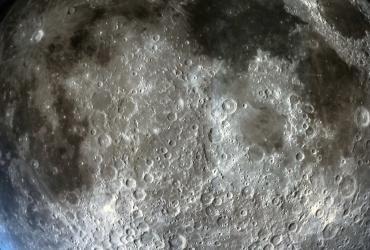Using the magnificent Museum of the Moon globe, we can explore this rugged little world, with its mountains, valleys, and numerous circular, walled structures called craters, the scars of countless impacts by rocks from space. Find out how the Moon was formed, learn about the phases of the Moon, how it raises the ocean tides, how it regulates Earth's climate, and how it is slowly making our day longer.
Doors open at 6.30pm with the talk beginning at 7pm.
Dr John Mason is Principal Lecturer at the South Downs Planetarium in Chichester. He has an international reputation as an enthusiastic and entertaining communicator of science. John has been leading overseas expeditions to observe and record natural phenomena such as annular and total solar eclipses, the polar aurora and major meteor showers to destinations all over the world for over 30 years. The asteroid 1990 MN was named 6092 Johnmason, after him by the International Astronomical Union in recognition of his various contributions to astronomy and he was made an MBE in the 2009 New Year’s Honours list for his services to science education.


